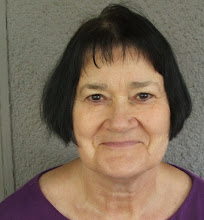Vague descriptions of characters create vague characters. "She was rich and aristocratic" is not particularly helpful to a reader. "Her shiny brown hair was pulled back in the kind of elaborate knot that only a maid could do, and the comb that held it had two turquoise stones worth more than my rent" tells us a great deal more.
Readers are counting on us writers to paint portraits both physical and moral. The moral characteristics are often best served up through dialog and actions that the character takes. Physical description comes out more directly. And it requires us to be creative. "He was fat and ugly" works, but "his shirt buttons strained to contain his belly" or "His dark eyes were so small and his hook nose so large, you just knew the kids had taunted him in the playground" tell us more.
In Weekend Novelist, Robert J Ray recommends spending some considerable time in a mall or airport or other public venue where lots of people hang out or pass through and taking notes on character descriptions. Although I never followed his whole program, that idea has worked well for me. When you see people as they are, physical descriptions of characters get imprinted into your imagination. How they look, how they move, how they dress. Their gestures, mannerisms, quirks and foibles. All of those things bring the character alive.
Some inexperienced writers believe readers would rather create their own descriptions but that is rarely true. Readers don't want to work that hard; they much prefer to leave the "portraiture" to the author.
Friday, October 8, 2010
Subscribe to:
Comments (Atom)

